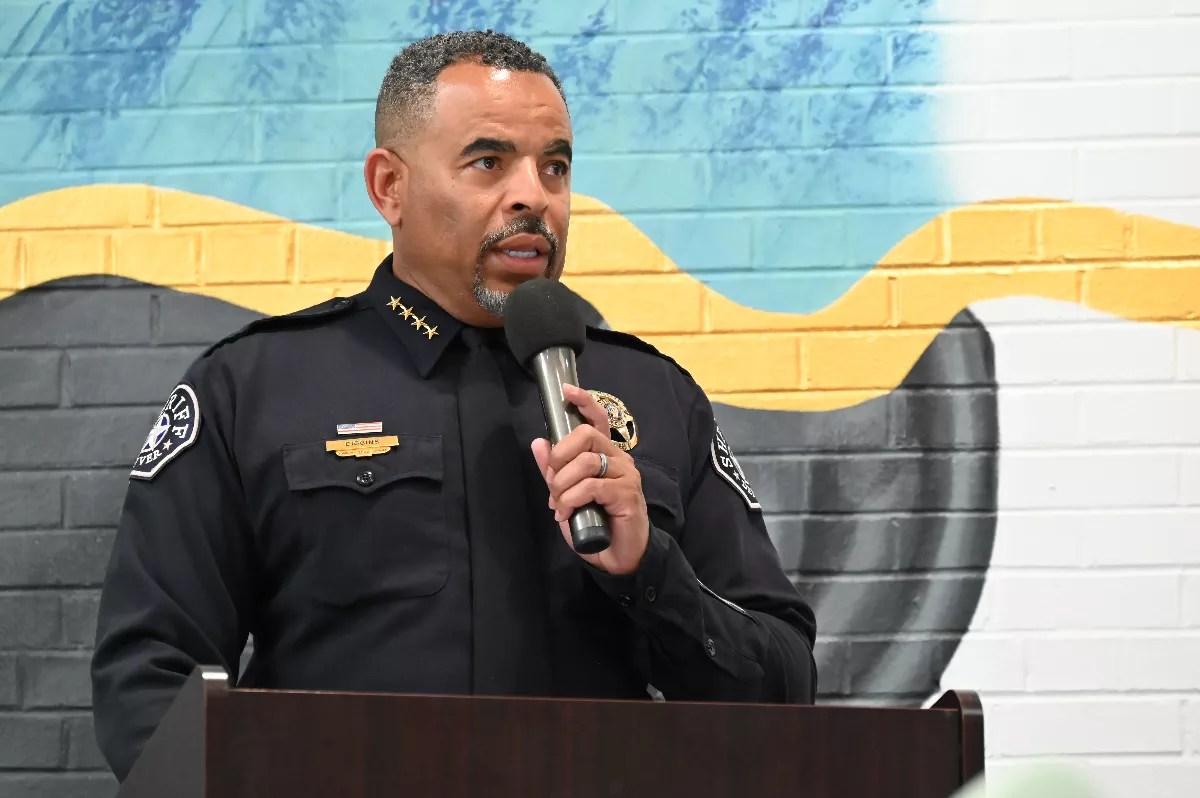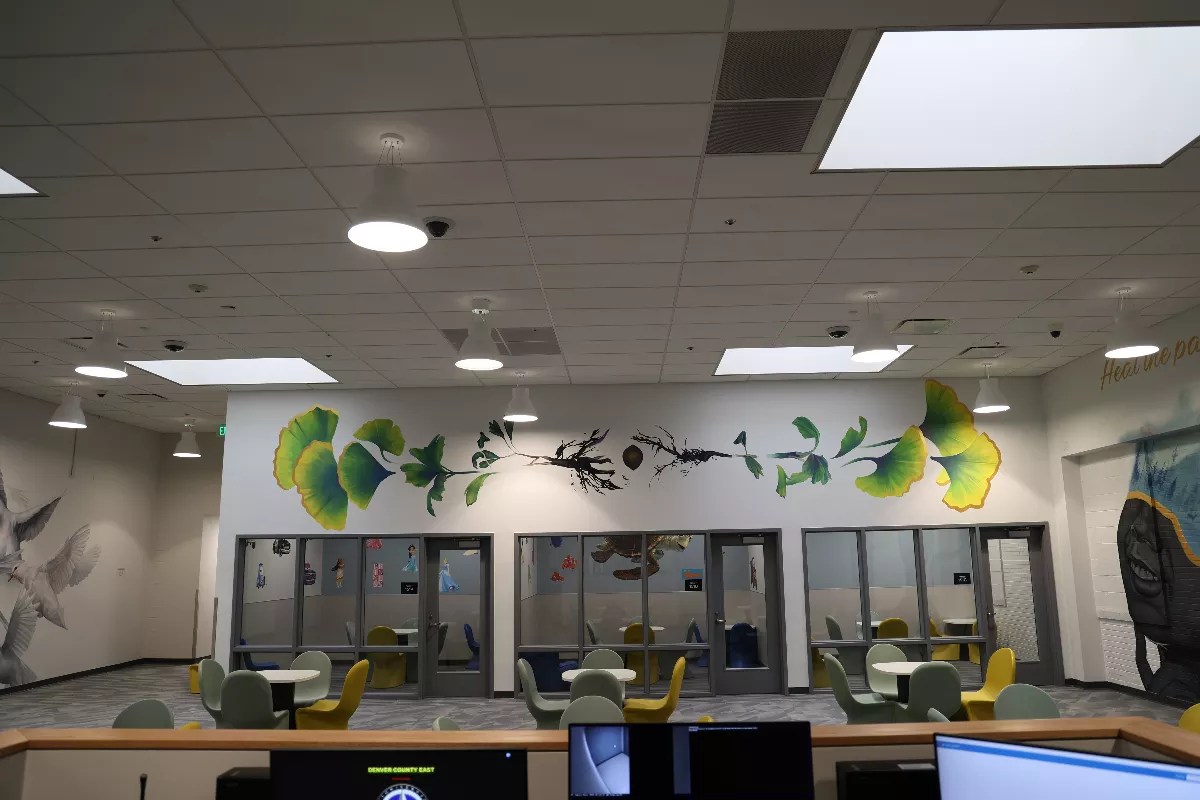
Bennito L. Kelty

Audio By Carbonatix
When Denver Sheriff Elias Diggins started his career as a deputy in 1994, he was assigned to oversee the installation of the video equipment for inmate visits as his first project. On Friday, May 17, he realized a full-circle moment at a ribbon-cutting ceremony to mark the reintroduction of in-person visits at the jail, which ended with video visitations nearly twenty years ago.
“At that time, most jails in the nation began to do so because the technology allowed us to connect people through monitors,” Diggins said. “It helped us to combat one of the problems that has existed in jails to this day: the introduction of contraband.”
The Denver County Jail, at 10500 East Smith Road, allowed in-person visitations from the time it was built in 1954 until 2005, when the jail completed the project that Diggins had started and discontinued the visitations except from inmates’ lawyers and therapists.
Diggins, who was appointed sheriff in 2020, recalled that when he was a kid, his father was incarcerated at the Denver County Jail; they would reunite there for brief visits. And now the jail is resuming in-person visitations this month for the sake of its inmates, according to Diggins.
“We must balance our security needs with the need to keep people connected in a way that a video call just doesn’t allow,” he said. “Being face-to-face with a loved one or friend is something we all long for, and that connection is truly a part of the human experience.”
The jail will roll out the program slowly by offering thirty-minute in-person visits on Fridays and Saturdays from noon to 4 p.m., but only for inmates with low-level charges, including nonviolent crimes. The first in-person visits will take place on Friday, May 24. Out of more than 600 inmates in Denver County Jail, about 98 are currently eligible for in-person visits, Diggins said.

After nearly twenty years, the Denver County Jail will resume in-person visits in this cheerful room.
Courtesy of Denver Sheriff Department
Denver started to consider reinstating in-person visits in 2017, when the Office of the Independent Monitor suggested the idea to the Sheriff’s Department, Diggins said. The project slowed when COVID hit, and it also took time to purchase the body scanners that will be used to examine inmates leaving the visiting room, he added.
According to Diggins, Denver is now the only county in Colorado that offers in-person visitation at one of its jails. Most prisons, which are for convicted criminals, offer in-person visitations; jails, which are for people awaiting trial, switched to video visitations across the country around the time Colorado made the move.
The new visitation area is in the same space where in-person visits took place before 2005, and where Diggins used to visit his dad. In-person visits there were “very correctional,” he recalled.
“The walls were plain. The floors had no carpeting, it was just tile. There were no private visiting rooms. There was a long table with a white countertop with chairs for the people in custody on that side and chairs on the other side for family members,” Diggins described. “That experience of those families coming into this space, we know it was traumatizing.”
The city spent $1.4 million to bring back in-person visitations, installing new equipment and renovating the old space. The city commissioned artist Sean Marshall, who spent twenty years in prison, to paint murals for the walls. The area has windows that allow in sunlight, soft carpeting and colorful chairs. There’s also a small adjunct room with a glass wall and door where families can meet with a bit more privacy.
The space is designed to “impact lives” through its calming, welcoming design, said Marshall, whose work is also on display as part of a Prison Art Experience exhibit at the State Capitol.
“Most of the incarcerated individuals are going to be returning to society at some point, so while they’re incarcerated, do we want these institutions to serve toward healing these individuals?” the artist asked. “Toward the end of my sentence, when they did make a commitment to painting murals and bettering these spaces, I saw firsthand what it did not only for the inmates, but for the officers who worked in those institutions and everyone who entered that space.”
Request forms for in-person visits can be found online; filling out the form is the first step. People can schedule video visits on the same website.